We recently did a couple of home inspection podcasts with local mold expert Vickie Swenson, and we asked her about the top five places to find mold in the home. Before giving her a chance to answer this question, we also told her this would turn into a blog post ;-). I had already put together my own list, and our lists were nearly identical.
As a home inspector, I don’t specifically look for mold (see Mold or Suspected Organic Microbial Growth), but when I find stuff that looks like mold, I report it as such. A mold issue is a moisture issue. If I wanted a wordy, stuffy-sounding title, I might call this blog post “The top five places to find suspected organic microbial growth.”
Finished Basements
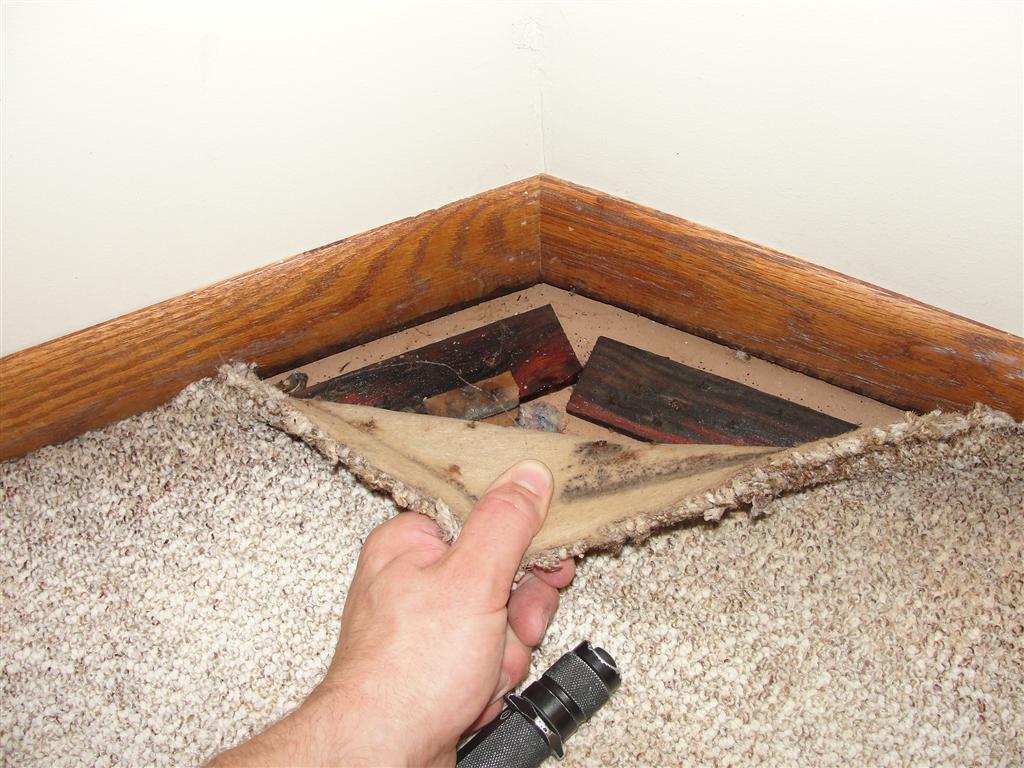
It’s a challenge to finish off a basement in Minnesota and to never have a water intrusion problem. That’s not to say it can’t be done, however. I live in a 2002-built home with a finished basement, and I’m pretty sure I’ve never had water in my basement… but there’s always tomorrow, right?
Basement carpet is a prime location to find mold growth in finished basements. When basement carpet gets wet, it frequently stays wet for a long time before being discovered. Sometimes, the underside of basement carpet can get damp without anyone even noticing.
We frequently pull back carpet in the corners of basement rooms where we suspect water issues. A less objective method for finding mold, but surely just as reliable, is to simply get down and smell your carpeting. If it smells moldy, it probably is.
Unfinished walls at walkout basements
When a new-ish home is built with an unfinished walkout basement, there’s a good chance that the home will have a mold problem inside the walls. It happens over and over again with these homes.
The problem is that basements suck; through stack effect, air comes in at the basement level and leaves at the top of the home. When humid summer air is sucked into a relatively cool basement, you end up with a bunch of condensation on the insulation side of the poly, and it eventually causes mold growth.
How do you prevent this from happening? I have no idea. I think the way we build houses with fiberglass batts and a poly vapor barrier on the conditioned side of the insulation is stupid, especially when the poly is left exposed.
Prove me wrong.
My last home had this problem, and I solved it by replacing the fiberglass batts with closed-cell spray foam.
Bathrooms
Bathrooms are humid places, and you end up with a lot of moldy-looking stuff. We find it behind caulk in showers, on tile grout, on walls, on ceilings… everywhere.
The best way to help prevent this type of mold growth in bathrooms is to keep humidity levels low. If you don’t have a bathroom exhaust fan, fix that. Also, be sure to operate your bath fan for a long time after taking a shower; typically 30 – 60 minutes. To make it easier to do that, I recommend replacing traditional switches with a timer or a humidity sensor with a built-in timer.
Attics
We find a ton of moldy attics. Sometimes the staining in an attic isn’t mold, but from a home inspection perspective, we report it the same way. It’s a telltale sign that there’s a moisture problem in the attic. Moisture problems in attics lead to frost accumulation, mold, stained ceilings, delaminated roof sheathing, and ruined insulation.
Attic bypasses, aka attic air leaks, are at the root of all attic moisture problems here in Minnesota. Check out my blog post on frost in attics for ways to help prevent this.
Behind stored items on outside walls

This one is building science 101. If you have a closet located at an outside wall and you pile a bunch of stuff against the wall, you’re moving the dew point. Or to put it another way, that stuff you’re piling against the wall is acting as insulation. You’re preventing the heat in your home from reaching the outside wall, so the wall stays colder, and you end up with condensation on the wall. That leads to mold growth.
The solution? Don’t store stuff against exterior walls. If you have a newer home with 2×6 construction, you’ll probably be ok. An insulated 2×4 wall will probably be ok too, but uninsulated walls are the ones that can really have problems.
p.s. – check out this related post from Porch: Find The Perfect Balance and Learn How To Control Humidity In Your Home

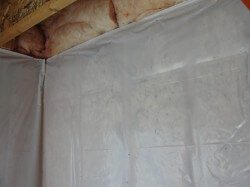
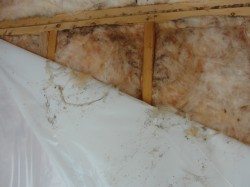
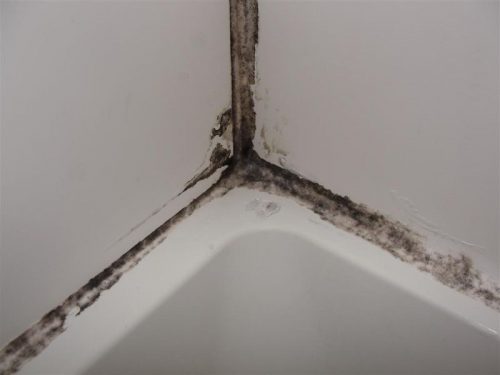
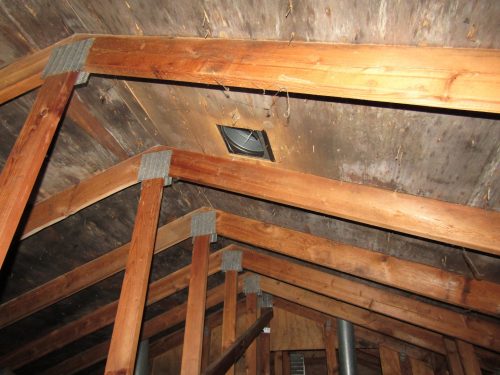

Jim Moechnig
January 7, 2020, 8:24 am
Why is “humidity sensor with built-in timer” crossed out? Do you no longer recommend that product, or such products in general? Is my browser displaying the text incorrectly?
Mark
January 7, 2020, 9:27 am
It is a hyperlink to HomeDepot to the Leviton Humidity Sensor Fan Control switch. Just a HTML formatting problem.
Reuben Saltzman
January 7, 2020, 9:32 am
What Mark said. The link is good, I’m not sure why it’s crossed out.
Rick
January 13, 2020, 2:08 am
Mold causes allergic reactions to some peoples, also induces breathlessness in some, Thus removing mold is very crucial. These are sometimes hard to find. Thus this post is very helpful in that respect. Thanks for sharing
Dustin
January 21, 2020, 11:24 am
Do you have recommendations for cleaning mold *behind* shower/bath caulk that’s coming off? I’d be concerned that the solution could damage what the caulk is supposed to protect. Thanks!
Kris
March 31, 2020, 10:23 pm
They do and I just did in my shower stall…works like a charm!!
Check out their blog post right here, https://structuretech.bizzyprojects.com/mold-shower-caulk-2/